The ASRock Rack EP2C612D16C-4L with its dual LGA2011-3 sockets provides a highly expandable server platform. ASRock has been making an aggressive push into the server space over the past few years, regularly introducing both general purpose and application specific solutions. The ASRock Rack EP2C612D16C-4L is a larger motherboard that is build around a similar platform as to the EP2C612D16-2L2T we reviewed a few months ago. The new motherboard has a m.2 PCIe slot along with quad Gigabit Ethernet LAN functionality.
Test Configuration
We used a fairly typical DP setup for this type of server and what we have used previously in our Intel Xeon E5-2600 V3 coverage.
- CPU: 2x Intel Xeon E5-2698 V3
- Motherboard: ASRock Rack EP2C612D16C-4L
- Memory: 8x SK.Hynix 16GB DDR4 2133MHz ECC RDIMMs
- SSD: 2x Samsung 840 Pro 256GB 4x Crucial M500 240GB, 3x SanDisk CloudSpeed Ultra 800GB SATA, 1x Intel S3700 100GB, 1x Samsung XP941 512GB
- Operating Systems: Ubuntu 14.04 LTS, Windows Server 2012 R2, VMware ESXi 5.5, CentOS 6.5
The test platform was rather expansive due to the enhanced SSD capacity of the motherboard.
ASRock Rack EP2C612D16C-4L Overview
The ASRock Rack EP2C612D16C-4L is a SSI EEB motherboard which will fit most standard depth server and workstation chassis. Most full-sized chassis will support SSI EEB mount points, however it is always advised to validate a motherboard and chassis will work together. The overall layout is clean and very accessible for servicing.

Looking at the CPU and memory sockets we see a LGA2011-3 narrow ILM mounting configuration. See our guide to narrow v. square ILM regarding cooling considerations. The CPU sockets are largely offset which helps with cooling compared to fully in-line configurations. The 2DPC RAM design accepts 8 DIMMs per processor. The DDR4 DIMM slots also have latches only on one end making installation easier in cramped spaces.

One can see evidence of how this helps below with the fixed DDR4 DIMM latch behind the rear I/O ports on the motherboard. Since they are fixed, the DIMM slots and rear I/O ports can be closer together.
In terms of PCIe expansion, the EP2C612D16C-4L has three PCIe 3.0 x16 slots. With larger cards, one is advised to use a half length card in the top PCIe x16 slot to ensure it does not interfere with RAM.
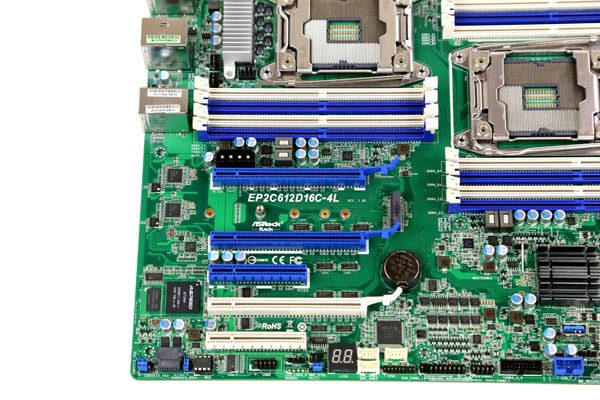
The two PCIe x8 slots are open ended so one can run x16 cards in x8 mode using these slots. One can also see a m.2 PCIe 3.0 x4 slot which is primarily used for adding PCIe based SSDs. We have seen the Samsung XP941 512GB performance in this motherboard and this capability can be added often even with a dual-slot cooler card in the top PCIe x16 slot. This is a great trend we have been seeing over the past few months in the marketplace.
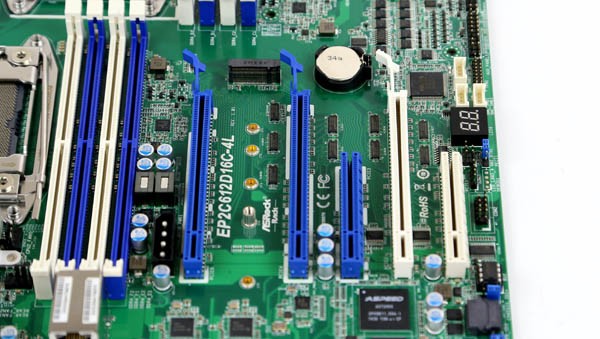
Moving to the bottom corner of the motherboard one can see various storage features. Specifically USB 2.0 and 3.0 headers as well as a USB 3.0 Type A header that can be used to mount a USB key. With the popularity of installing VMware ESXi and various embedded network appliances on USB drives, having an internal header is a major benefit.

One can also see the 12 SATA III 6.0gbps ports. Ten of these are via the Intel C612 PCH. The other two are from an additional Marvell 9172 SATA controller. The Marvell 9172 is supported in Windows and out of the box in many Linux distributions, however VMware ESXi does not support the controller out of the box.
With the rear I/O panel we see legacy ports represented by a 15-pin VGA port and a 9-pin serial port. We can also see more modern connectivity in the form of two USB 3.0 ports. There is one RJ-45 port dedicated to IPMI remote management and four RJ-45 ports providing quad gigabit Ethernet LAN connectivity. These four ports are powered by separate embedded Intel i210 controllers.
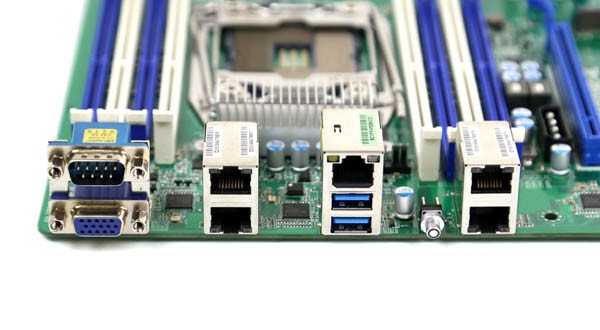
Overall the motherboard provides a solid set of onboard features for a broad range of applications.
ASRock Rack EP2C612D16C-4L Thermal Imaging
To capture these images we utilize our FLIR Ex series professional thermal imaging camera and turn on FLIR’s MSX enhancements so we can see components outlined clearly. We put the system under 100% CPU load for a period of 24 hours to let “heat soak” set in prior to taking the images.
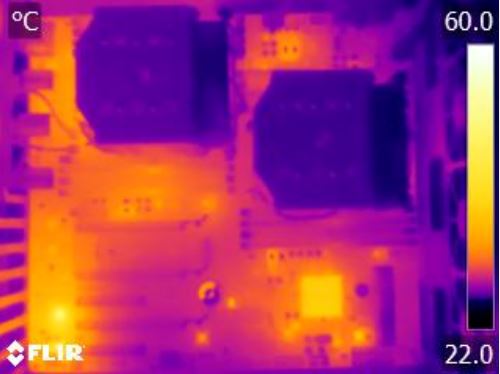
Even with our relatively massive Xeon E5 test processors, the motherboard uses low power components. The only two that really dissipate any noticeable heat even after our stress testing were the ASpeed AST2400 BMC chip and the Intel 612 PCH. Both appear to be running well within their specified operating temperature ranges. Having active cooling plus a highly offset design means that the processors stayed cool.
ASRock Rack Management
ASRock Rack has an industry standard web management interface based on the American Megatrends MegaRAC solution. The ASRock Rack IPMI 2.0 implementation has an array of configuration options and sensor information. One of the more interesting features is the ability to graph sensor information over time.
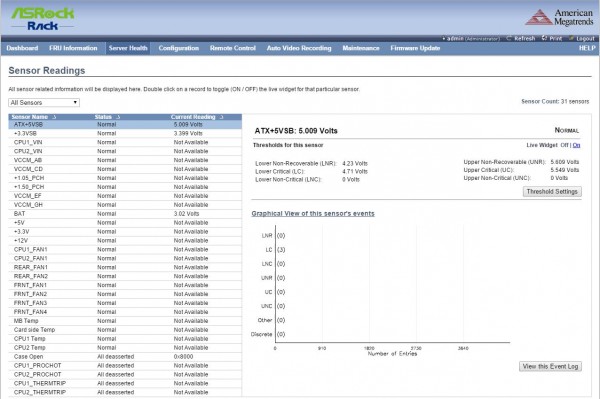
ASRock Rack includes remote KVM-over-IP functionality. From what we understand, 80% or more of servers are now supporting IPMI 2.0 and some sort of KVM-over-IP solution. The reason is simple. In a datacenter, KVM-over-IP saves companies a lot of time by allowing remote administration instead of having to physically access the server. Companies like HP, Dell, Lenovo and Intel are charging more for full KVM-over-IP functionality, but ASRock includes it with the motherboard. That is by far the preferred way to bundle the functionality.
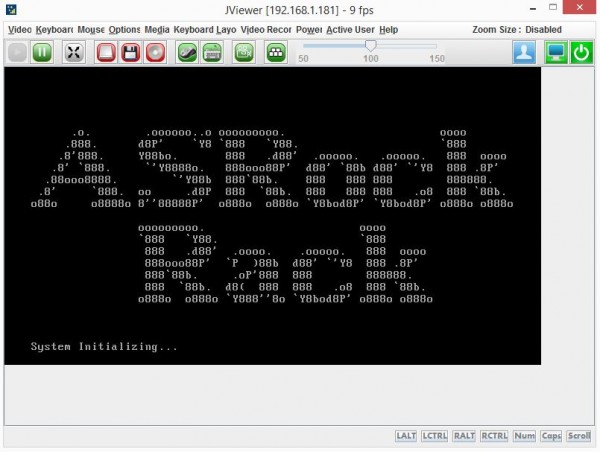
The ASRock Rack Remote management solution provides the remote administrator with the information they need to manage servers far away from the home office.
Conclusion
Overall the ASRock Rack EP2C612D16C-4L ran stable for the three weeks we hammered the platform running Linux-Bench, IOMeter and other workloads. The ASRock Rack platforms are increasingly competitive in the marketplace and retailers are increasingly starting to stock ASRock Rack components. With the m.2 PCIe SSD slot and quad Gigabit Ethernet ports, the EP2C612D16C-4L provides a very versatile platform for bare metal and virtualized servers.

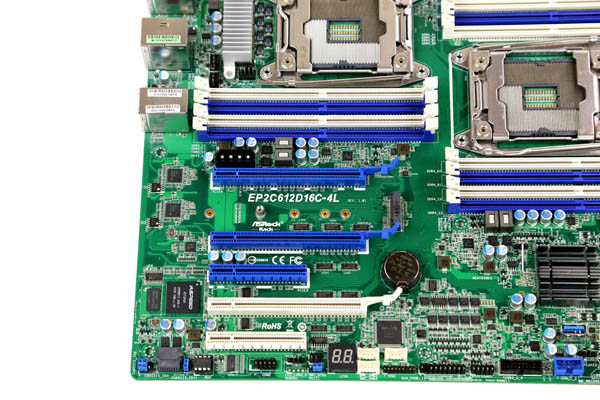


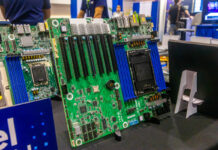
Nice board. I just hope they get sold more broadly in the US.
Check out Mwave or Provantage. They’re a reliable source for ASRock Rack boards